The NVIDIA GeForce GTX 980 Ti Review
by Ryan Smith on May 31, 2015 6:00 PM ESTNVIDIA's Computex Announcements & The Test
Alongside the launch of the GTX 980 Ti, NVIDIA is also taking advantage of Computex to make a couple of other major technology announcements. Given the scope of these announcements we’re covering these in separate articles, but we’ll quickly go over the high points here as they pertain to the GTX 980 Ti.
G-Sync Variable Overdrive & Windowed Mode G-Sync
NVIDIA is announcing a slew of G-Sync products/technologies today, the most important of which is Mobile G-Sync for laptops. However as part of that launch, NVIDIA is also finally confirming that all G-Sync products, including existing desktop G-Sync products, feature support for G-Sync variable overdrive. As the name implies, this is the ability to vary the amount of overdrive applied to a pixel based on a best-effort guess of when the next frame will arrive. This allows NVIDIA to continue to use pixel overdrive on G-Sync monitors to improve pixel response times and reduce ghosting, at a slight cost to color accuracy while in motion from errors in the frame time predictions.
Variable overdrive has been in G-Sync since the start, however until now NVIDIA has never confirmed its existence, with NVIDIA presumably keeping quiet about it for trade secret purposes. However now that displays supporting AMD’s Freesync implementation of DisplayPort Adaptive-Sync are out, NVIDIA is further clarifying how G-Sync works.
Meanwhile being freshly rolled out in NVIDIA’s latest drivers is support for Windowed Mode G-Sync. Before now, running a game in Windowed mode could cause stutters and tearing because once you are in Windowed mode, the image being output is composited by the Desktop Window Manager (DWM) in Windows. Even though a game might be outputting 200 frames per second, DWM will only refresh the image with its own timings. The off-screen buffer for applications can be updated many times before DWM updates the actual image on the display.
NVIDIA will now change this using their display driver, and when Windowed G-Sync is enabled, whichever window is the current active window will be the one that determines the refresh rate. That means if you have a game open, G-Sync can be leveraged to reduce screen tearing and stuttering, but if you then click on your email application, the refresh rate will switch back to whatever rate that application is using. Since this is not always going to be a perfect solution - without a fixed refresh rate, it's impossible to make every application perfectly line up with every other application - Windowed G-Sync can be enabled or disabled on a per-application basis, or just globally turned on or off.
GameWorks VR & Multi-Res Shading
Also being announced at Computex is a combination of new functionality and an overall rebranding for NVIDIA’s suite of VR technologies. First introduced alongside the GeForce GTX 980 in September as VR Direct, NVIDIA will be bringing their VR technologies in under the GameWorks umbrella of developer tools. The collection of technologies will now be called GameWorks VR, adding to the already significant collection of GameWorks tools and libraries.
On the feature front, the newly minted GameWorks VR will be getting a new feature dubbed Multi-Resolution Shading, or Multi-Res Shading for short. With multi-res shading, NVIDIA is looking to leverage the Maxwell 2 architecture’s Multi-Projection Acceleration in order to increase rendering efficiency and ultimately the overall performance of their GPUs in VR situations.
By reducing the resolution of video frames at the edges where there is already the most optical distortion/compression and the human eye is less sensitive, NVIDIA says that using multi-res shading can result in a 1.3x to 2x increase in pixel shader performance without noticeably compromising the image quality. Like many of the other technologies in the GameWorks VR toolkit this is an implementation of a suggested VR practice, however in NVIDIA’s case the company believes they have a significant technological advantage in implementing it thanks to multi-projection acceleration. With MPA to bring down the rendering cost of this feature, NVIDIA’s hardware can better take advantage of the performance advantages of this rendering approach, essentially making it an even more efficient method of VR rendering.
Getting Behind DirectX Feature Level 12_1
Finally, though not an outright announcement per-se, from a marketing perspective we should expect to see NVIDIA further promote their current technological lead in rendering features. The Maxwell 2 architecture is currently the only architecture to support DirectX feature level 12_1, and with DirectX 12 games due a bit later this year, NVIDIA sees that as an advantage to press.
For promotional purposes NVIDIA has put together a chart listing the different tiers of feature levels for DirectX 12, and to their credit this is a simple but elegant layout of the current feature level situation. The bulk of the advanced DirectX 12 features we saw Microsoft present at the GTX 980 launch are part of feature level 12_1, while the rest, and other functionality not fully exploited under DirectX 11 are part of the 12_0 feature level. The one exception to this is volume tiled resources, which is not part of either feature level and instead is part of a separate feature list for tiled resources that can be implemented at either feature level.
The Test
The press drivers for the launch of the GTX 980 Ti are release 352.90, which other than formally adding support for the new card is otherwise identical to the standing 352.86 drivers.
| CPU: | Intel Core i7-4960X @ 4.2GHz |
| Motherboard: | ASRock Fatal1ty X79 Professional |
| Power Supply: | Corsair AX1200i |
| Hard Disk: | Samsung SSD 840 EVO (750GB) |
| Memory: | G.Skill RipjawZ DDR3-1866 4 x 8GB (9-10-9-26) |
| Case: | NZXT Phantom 630 Windowed Edition |
| Monitor: | Asus PQ321 |
| Video Cards: | AMD Radeon R9 295X2 AMD Radeon R9 290X AMD Radeon HD 7970 NVIDIA GeForce GTX Titan X NVIDIA GeForce GTX 980 Ti NVIDIA GeForce GTX 980 NVIDIA GeForce GTX 780 Ti NVIDIA GeForce GTX 780 NVIDIA GeForce GTX 680 NVIDIA GeForce GTX 580 |
| Video Drivers: | NVIDIA Release 352.90 Beta AMD Catalyst Cat 15.5 Beta |
| OS: | Windows 8.1 Pro |


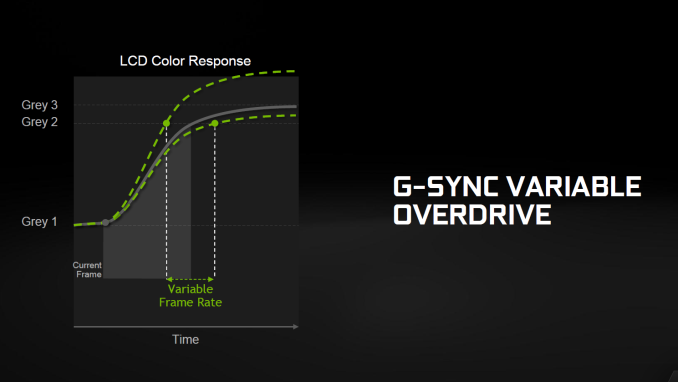
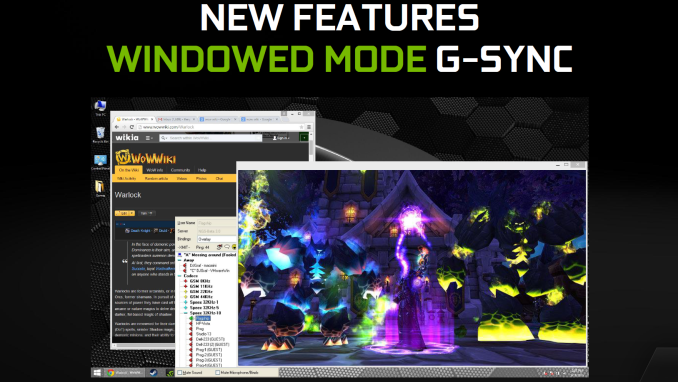
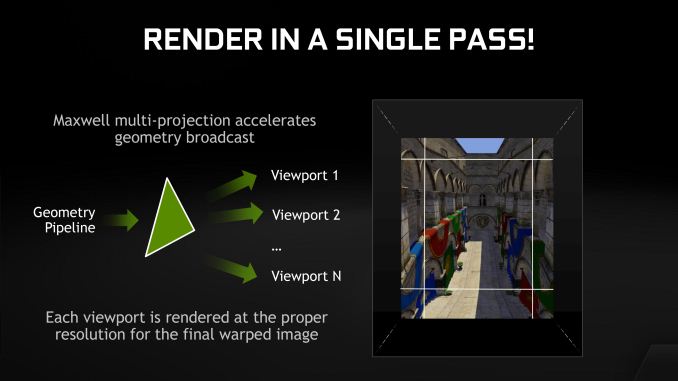
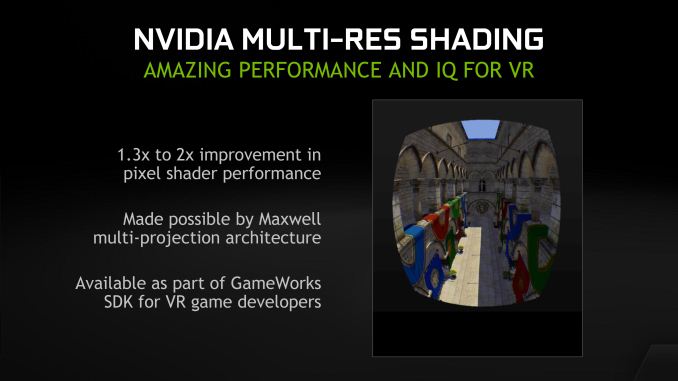
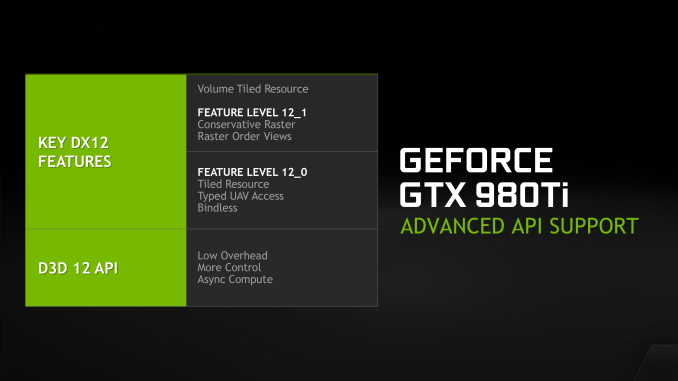








290 Comments
View All Comments
FlushedBubblyJock - Wednesday, June 10, 2015 - link
I bought a bunch of G80 G92 G92b and G94 nvidia cards because you could purchase memory size, bandwidth, bit width, power connector config, essentially any speed at any price point for a gamers rig, install the same driver, change the cards easily, upgrade for your customers without hassles...IT WAS A GOLD MINE OF FLEXIBILITY
What happened was, the amd fanboys got very angry over the IMMENSE SUCCESS of the initial G80 and it's reworked cores and totally fluid memory, card size, bit width, and pricing configurations... so they HAD TO TRY TO BRING IT DOWN...
Thus AMD launched their PR war, and the clueless amd fan launched their endless lies.
I'll tell you this much, no on would trade me a 9800GTX for a 9800GT
I couldn't get the 92 bit width cards for the same price as the 128 bit
DDR2 and DDR3 also differentiated the stack massively.
What we had wasn't rebranding, but an amazingly flexible GPU core that stood roaring above at the top and could be CUT down to the middle and the low gaming end, an configured successfully with loads of different bit widths and memory configs....
64 bit width, 92, 128, 256, 384, 192, ETC...
That was an is a awesome core, period.
BillyONeal - Sunday, May 31, 2015 - link
And people have been bent out of shape about it. For "YEARS" :)dragonsqrrl - Sunday, May 31, 2015 - link
Their highest-end rebadge, the 390X, will likely compete with the 980, not the 980 Ti. The 980 Ti will be closer to Fiji's performance profile.austinsguitar - Sunday, May 31, 2015 - link
I dont think you realize how much more efficiant this card is even compared to past cards for its nm and performance. This is a feat. Just calm down and enjoy. I am very happy that the cards price us perfect. :) thanks nvidiaMapRef41N93W - Sunday, May 31, 2015 - link
Maybe you aren't aware of how silicon works, but this a 601mm^2 die which costs a boat load to produce especially with the rising costs of crystalline silicon dies. Being on 28nm this long just means the yields are higher (which is why a 601mm^2 is even possible).You aren't going to see a 14nm card that outperforms this by much till 2017 at the earliest which following the recent NVIDIA trends should see the Titan XYZ (whatever they want to call it) which should be a pretty huge jump at a pretty high price.
Thomas_K - Monday, June 1, 2015 - link
Actually AMD is doing 14nm starting next yearhttp://www.guru3d.com/news-story/it-is-official-am...
"Although this was a rumor for a long time now we now know that AMD skips 20nm and jumps onto a 14nm fabrication node for their 2016 GPUs."
dragonsqrrl - Sunday, May 31, 2015 - link
Not sure I understand your comment, 28nm is precisely why we're paying this much for this level of performance in 2015... But it's also pretty impressive for the same reason.Azix - Sunday, May 31, 2015 - link
14/16nm might cost more. 28nm should have better yields and lower cost. These chips do not cost much to make at all (retail price could be 2-3 times the chip cost)dragonsqrrl - Sunday, May 31, 2015 - link
I think you misinterpreted my comment. I was responding to someone who seemed shocked by the fact that price/performance ratios aren't improving dramatically despite the fact that we're on a very mature process. In response I said the fact that we're on the same process is precisely why we aren't seeing dramatic improvements in price/performance ratios."28nm should have better yields and lower cost. These chips do not cost much to make at all (retail price could be 2-3 times the chip cost)"
Yields are just one part of the equation. Die size also plays a significant role in manufacturing costs. The fact that your trying to say with a straight face that GM200 does not cost much to make says more than your written comment itself.
zepi - Monday, June 1, 2015 - link
Assuming perfect scaling 600mm2 28nm chip would shrink to 150mm2 at 14nm.GM107 is a 148mm2 chip, so basically this "monster" with just a dieshrink would find a nice place for itself at the bottom end of Nvidias lineup with after transition to 14nm.
This does not take into account the fact that at 14nm and 150mm2 they couldn't give it enough memory bandwidth so easily, but just tells you something about how significant the reduction in size and manifacturing cost is after the initial ramp-up of the yields.